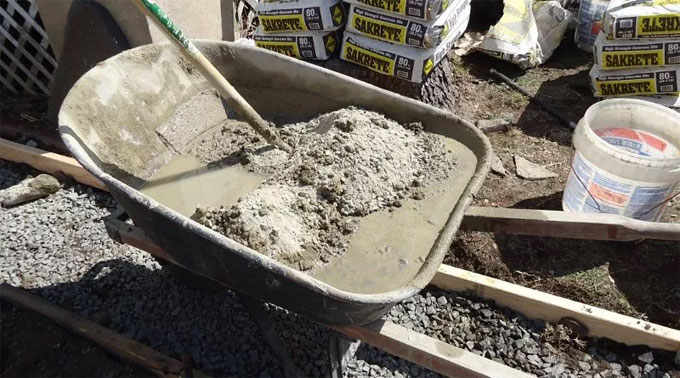
Details about floor screed
Mix ratio of sand and cement screed for floor differs on the basis of the proposed use of the screed. Aside from that, mix ratio is impacted with cement type, grade of aggregate and the method of accumulation of screed material to specific degree. So, the quality of cement should be proper and there should not be any deleterious materials within sand.
It is found that for conventional screeds a mix ratio of 1:6 (Portland cement: sand/aggregate) is a normal range that is normally utilized; mix ratios of 1:4 (cement to sand) is extensively used.
Choosing of materials for Sand-Cement Screed:
1. Cement: The types of cement perfectly applicable for various types of screeds are selected with adherence to the British standards.
It is crucial to opt for the definite cement type for getting superior results, since disparity in cement quality will significantly impact the strength formation of the screed and its vulnerability to poor curing.
2. Sand: The performance and look of a screed is mainly dependent on the size and shape of sand. It should be ensured that the existence of materials remain under the tolerable level.
The size of the aggregate is stated depending on the function of the screed (as for example for normal duty screed), the maximum size of sand is 4mm. For heavy duty screed, the maximum size of aggregate differs from 6mm and 10mm. If possible, the sand should be examined in a laboratory in advance.
3. Water: The quantity of water should be included with the mixture and settled at site. Snowball test should be carried out to ensure that a desirable amount of water is included with the mixture.
There should not be any supplementary water since it decreases strength and raises the risk of cracking. A rigid mix with too little water does not enable full compaction, and the screed may decay in due course of time.
Snowball Test for Sand-Cement Screed: Snowball test is performed to make sure that there is sufficient amount of water. The test comprises of squeezing a handball of the screed mix. The consistency becomes perfect if the screed retains together devoid of dripping water.
Mix Ratio for Sand-Cement Screed: The mix ratio varies dependent on the intended use of the screed. In addition to cement type, grade of aggregate and the method of storage of screed material that also influence mix ratio to a certain extend.
It is reported that, for traditional screeds a mix proportion of 1:6 Portland cement: sand/aggregate is a normal range that is commonly used. However, mix proportions of 1:4 cement to sand is widely applied which comply with British Standard (BS12). Mix ratio should produce a plastic, easy-working, cohesive mortar of plastering consistence.


